A vibrant, healthy lawn is the pride of any homeowner. It provides a lush backdrop for outdoor activities, enhances curb appeal, and contributes to a welcoming atmosphere. Achieving and maintaining such a lawn requires proper care and attention. Here are ten essential lawn care tips to help you cultivate a thriving oasis right in your own backyard.

Regular Mowing
Keeping your grass at the right height is crucial for its health. Set your mower blade to the appropriate height for your grass type and aim to cut no more than one-third of the grass blade's length at a time. Regular mowing encourages thicker, healthier turf and helps prevent weed growth.
Proper Watering
Water is essential for a healthy lawn, but it's important to water deeply and infrequently rather than shallowly and frequently. Aim to water your lawn early in the morning to reduce water loss from evaporation, and ensure the water penetrates the soil to encourage deep root growth. Use a rain gauge or moisture meter to gauge when your lawn needs watering, and adjust based on rainfall and weather conditions.
Fertilize Regularly
Like any living organism, grass requires nutrients to thrive. Regular fertilization provides essential nutrients that may be lacking in your soil, promoting strong root development and lush growth. Choose a fertilizer formulated for your grass type and apply according to the manufacturer's instructions, typically in spring and fall for cool-season grasses and late spring to early summer for warm-season grasses.
Aerate the Soil
Over time, soil compaction can occur, restricting the movement of air, water, and nutrients to the grass roots. Lawn aeration involves perforating the soil with small holes to alleviate compaction and promote better air and water circulation. Aeration also encourages root growth and improves the effectiveness of fertilization and watering.
Weed Control
Weeds not only detract from the beauty of your lawn but also compete with grass for essential nutrients and water. Implementing a proactive weed control strategy is essential for maintaining a healthy lawn. This may include manual removal of weeds, the use of pre-emergent herbicides to prevent weed seeds from germinating, and selective herbicides to target existing weeds while minimizing harm to desirable grasses.
Address Bare Spots Promptly
Bare spots in your lawn not only detract from its appearance but also provide an opportunity for weeds to take hold. Promptly address bare spots by loosening the soil, adding grass seed, and covering with a thin layer of mulch or straw to retain moisture and protect the seeds. Keep the area consistently moist until the new grass establishes itself.
Overseed Annually
Overseeding involves spreading grass seed over existing turf to fill in thin or bare areas and promote a denser lawn. It helps rejuvenate older lawns, improve grass variety diversity, and enhance overall turf health. Choose a high-quality grass seed blend appropriate for your climate and grass type, and overseed in the fall for cool-season grasses or late spring to early summer for warm-season grasses.
Manage Thatch Buildup
Thatch is a layer of dead grass, roots, and organic matter that accumulates on the soil surface over time. While a thin layer of thatch can be beneficial, excessive buildup can impede water and nutrient absorption and promote pest and disease problems. Manage thatch buildup by dethatching your lawn as needed, using a dethatching rake or machine to remove the excess organic matter and improve soil health.
Practice Proper Lawn Mower Maintenance
A well-maintained lawn mower is essential for achieving a clean, even cut and preventing damage to your grass. Regularly sharpen the mower blades to ensure a clean cut that promotes grass health and reduces the risk of disease. Additionally, keep the mower deck clean and properly adjusted to the recommended cutting height for your grass type.
Monitor and Prevent Pest and Disease Problems
Pest infestations and lawn diseases can quickly damage your lawn if left unchecked. Keep a close eye on your lawn for signs of pests such as grubs, chinch bugs, or armyworms, as well as symptoms of fungal diseases like brown patch or dollar spot. Implement preventative measures such as proper watering, fertilization, and aeration to maintain a healthy lawn that's more resilient to pests and diseases.
By following these ten essential lawn care tips, you can nurture a healthy, lush yard that's the envy of the neighborhood. With a little effort and attention to detail, you'll enjoy a vibrant lawn that provides beauty, comfort, and enjoyment for years to come.



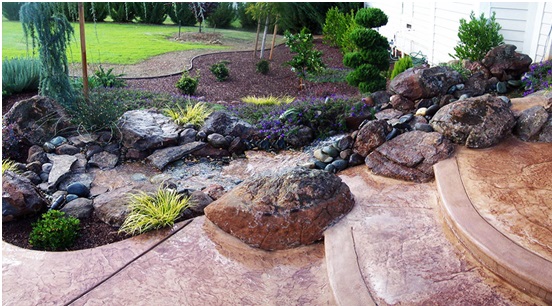
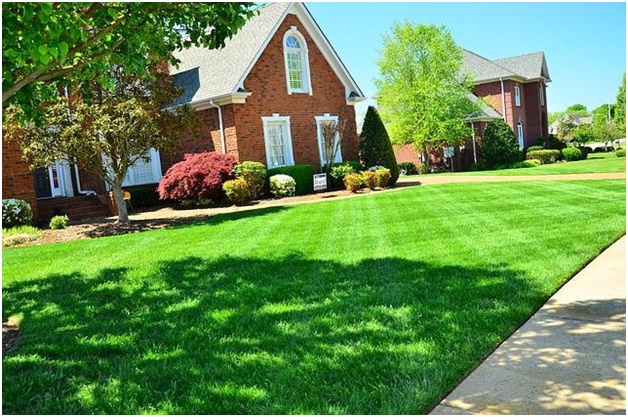
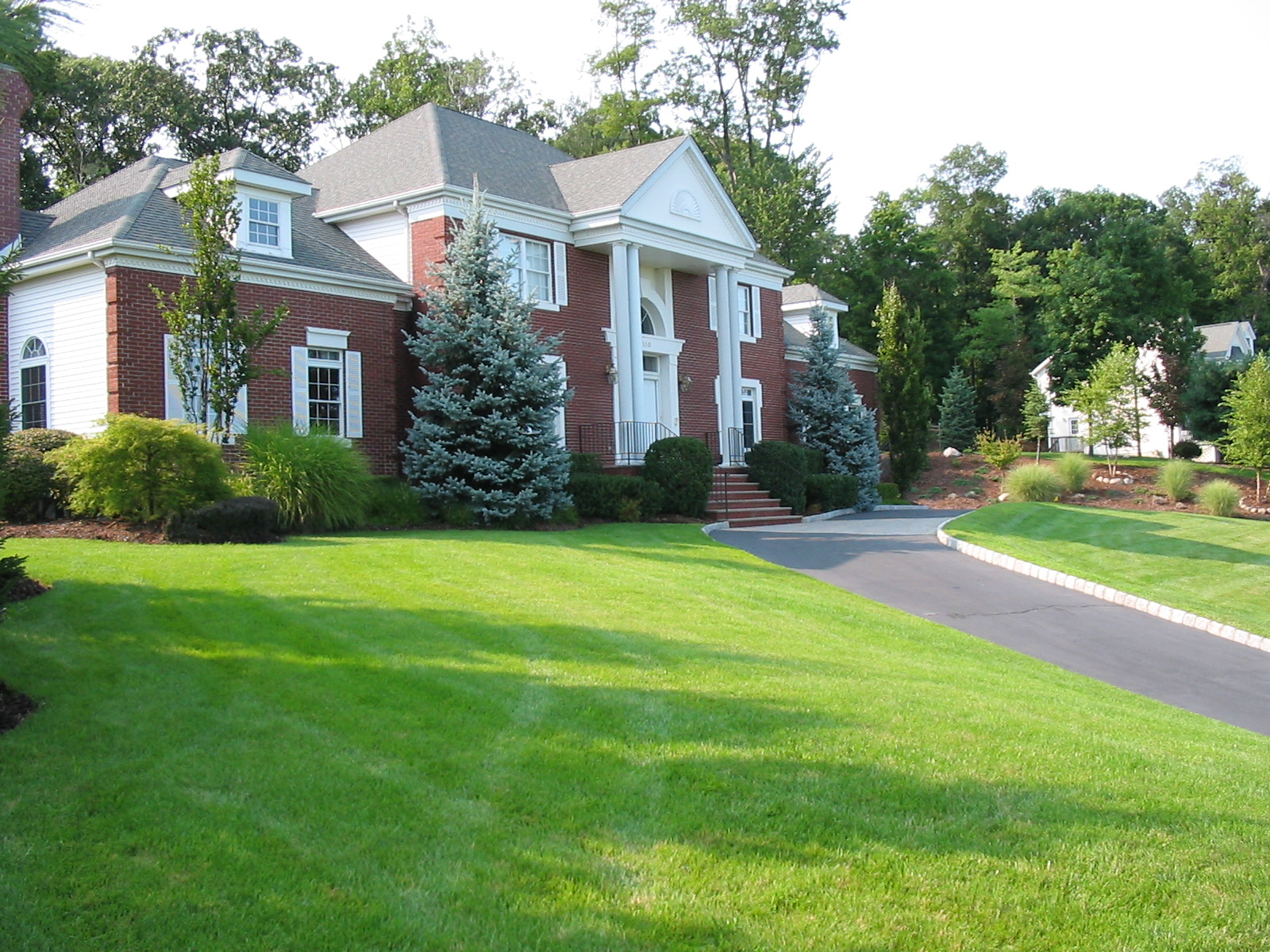
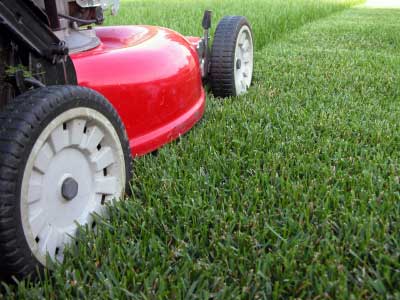 a standard gas powered rotary mower that cuts grass like a machette. The sharper the blades, the more even the cut. A dull blade will tear the grass rather than cut it, and this can lead to brown tips at the end of the blade of grass. Lawn mower blade sharping is an easy maintenance task that can be done with a grinder (even a Dremmel will work), or you can have it done by a professional for approximately $20.
Forth, don't mow in the same direction every time. Many people develop a habit when mowing the lawn and they mow exactly the same way every time. This causes the grass to develop a "grain" just like a piece of wood because the grass growing off to the sides does not get cut as evenly as the grass growing upwards. It is best to mow at a right angle to the direction the grass was last cut. So, for example, if you mowed your lawn from east to west last time, try mowing from north to south this time.
Finally, don't bag your clippings. Grass clippings are an easy way to return nutrients to the soil and reduce the need for artificial fertilizers. If you mow your lawn before the grass gets too tall, you won't notice the clippings anyhow. That and the fact that it's less work to ignore the clippings makes this a winner of an idea!
So, now you have five easy tips that don't add any extra work to week and possibly decrease your work load if you've been bagging your clippings. These won't make your yard look as good as a golf course, but they will help ensure that your lawn stays green and lush without any extra maintenance on your part.
a standard gas powered rotary mower that cuts grass like a machette. The sharper the blades, the more even the cut. A dull blade will tear the grass rather than cut it, and this can lead to brown tips at the end of the blade of grass. Lawn mower blade sharping is an easy maintenance task that can be done with a grinder (even a Dremmel will work), or you can have it done by a professional for approximately $20.
Forth, don't mow in the same direction every time. Many people develop a habit when mowing the lawn and they mow exactly the same way every time. This causes the grass to develop a "grain" just like a piece of wood because the grass growing off to the sides does not get cut as evenly as the grass growing upwards. It is best to mow at a right angle to the direction the grass was last cut. So, for example, if you mowed your lawn from east to west last time, try mowing from north to south this time.
Finally, don't bag your clippings. Grass clippings are an easy way to return nutrients to the soil and reduce the need for artificial fertilizers. If you mow your lawn before the grass gets too tall, you won't notice the clippings anyhow. That and the fact that it's less work to ignore the clippings makes this a winner of an idea!
So, now you have five easy tips that don't add any extra work to week and possibly decrease your work load if you've been bagging your clippings. These won't make your yard look as good as a golf course, but they will help ensure that your lawn stays green and lush without any extra maintenance on your part. 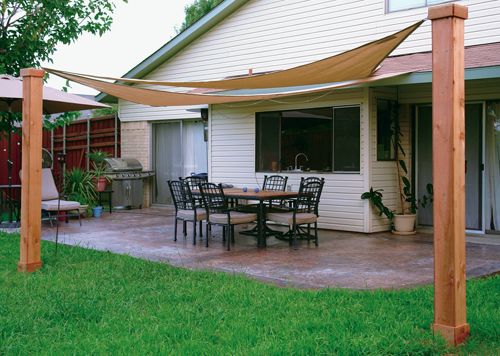 The Summer is coming. Get under something – quick. Before it rains..... Actually, this year is apparently set to be one of the best for ages. Finally, a series of sizzling summer months await all us drenched islanders. And about time, too – if the last three years were to set the standard for the summer to come, we’d all be emigrating. And the credit crunch, unfortunately, has made that impossible. Best get the patio sun shades out and make the most of it then.
And what, we hear you cry, are patio sun shades?
Patio sun shades are a rather funky innovation from our brothers and sisters Down Under, who are of course used to a bit of sun. Unlike the flimsy parasol, which doesn’t help when it rains and doesn’t really shade when it’s hot, patio sun shades are explicitly designed to block the harmful bits of the sun’s light (UV rays), offer genuine coolness underneath (unlike the tent like boiling one gets in the “shade” of a parasol) and even look nice into the bargain.
That’s right – patio sun shades look nice. No longer will we have to suffer under the yoke of tacky garden furniture, and no more will our children be forced to listen to the broken-hearted flapping of yet another snapped spoke or loosened piece of canvas. Patio sun shades are sturdy and beautiful – and they don’t even have supports to break. Patio sun shades either connect directly to the sides of a house – like an awning made of highly-polished sail canvas – or they are fixed to an attractive, mast like pole quite different from the flimsy two-part parasol stalks that we are used to.
Patio sun shades come in a variety of gorgeous colors, though standard white is easily the best – with the white shade sails, you get a very pleasing contrast between the greens and petals of the garden and the stark white of the shade. Because they’re stiff, and shaped, patio sun shades look like nothing so much as pieces of avant-garde art: like floating sculpture by Anthony Gormley or Henry Moore. And they repel over 85% of the sun’s harmful rays.
With a possibly actually quite hot summer on the horizon, and a nation of gardens crying out for some decent shade – not to mention decent-looking garden furniture – it looks like it might finally be the time to invest. Get those shrimps on the Barbie – and hoist the patio sun shades. It’s gonna be a scorcher.
The Summer is coming. Get under something – quick. Before it rains..... Actually, this year is apparently set to be one of the best for ages. Finally, a series of sizzling summer months await all us drenched islanders. And about time, too – if the last three years were to set the standard for the summer to come, we’d all be emigrating. And the credit crunch, unfortunately, has made that impossible. Best get the patio sun shades out and make the most of it then.
And what, we hear you cry, are patio sun shades?
Patio sun shades are a rather funky innovation from our brothers and sisters Down Under, who are of course used to a bit of sun. Unlike the flimsy parasol, which doesn’t help when it rains and doesn’t really shade when it’s hot, patio sun shades are explicitly designed to block the harmful bits of the sun’s light (UV rays), offer genuine coolness underneath (unlike the tent like boiling one gets in the “shade” of a parasol) and even look nice into the bargain.
That’s right – patio sun shades look nice. No longer will we have to suffer under the yoke of tacky garden furniture, and no more will our children be forced to listen to the broken-hearted flapping of yet another snapped spoke or loosened piece of canvas. Patio sun shades are sturdy and beautiful – and they don’t even have supports to break. Patio sun shades either connect directly to the sides of a house – like an awning made of highly-polished sail canvas – or they are fixed to an attractive, mast like pole quite different from the flimsy two-part parasol stalks that we are used to.
Patio sun shades come in a variety of gorgeous colors, though standard white is easily the best – with the white shade sails, you get a very pleasing contrast between the greens and petals of the garden and the stark white of the shade. Because they’re stiff, and shaped, patio sun shades look like nothing so much as pieces of avant-garde art: like floating sculpture by Anthony Gormley or Henry Moore. And they repel over 85% of the sun’s harmful rays.
With a possibly actually quite hot summer on the horizon, and a nation of gardens crying out for some decent shade – not to mention decent-looking garden furniture – it looks like it might finally be the time to invest. Get those shrimps on the Barbie – and hoist the patio sun shades. It’s gonna be a scorcher.